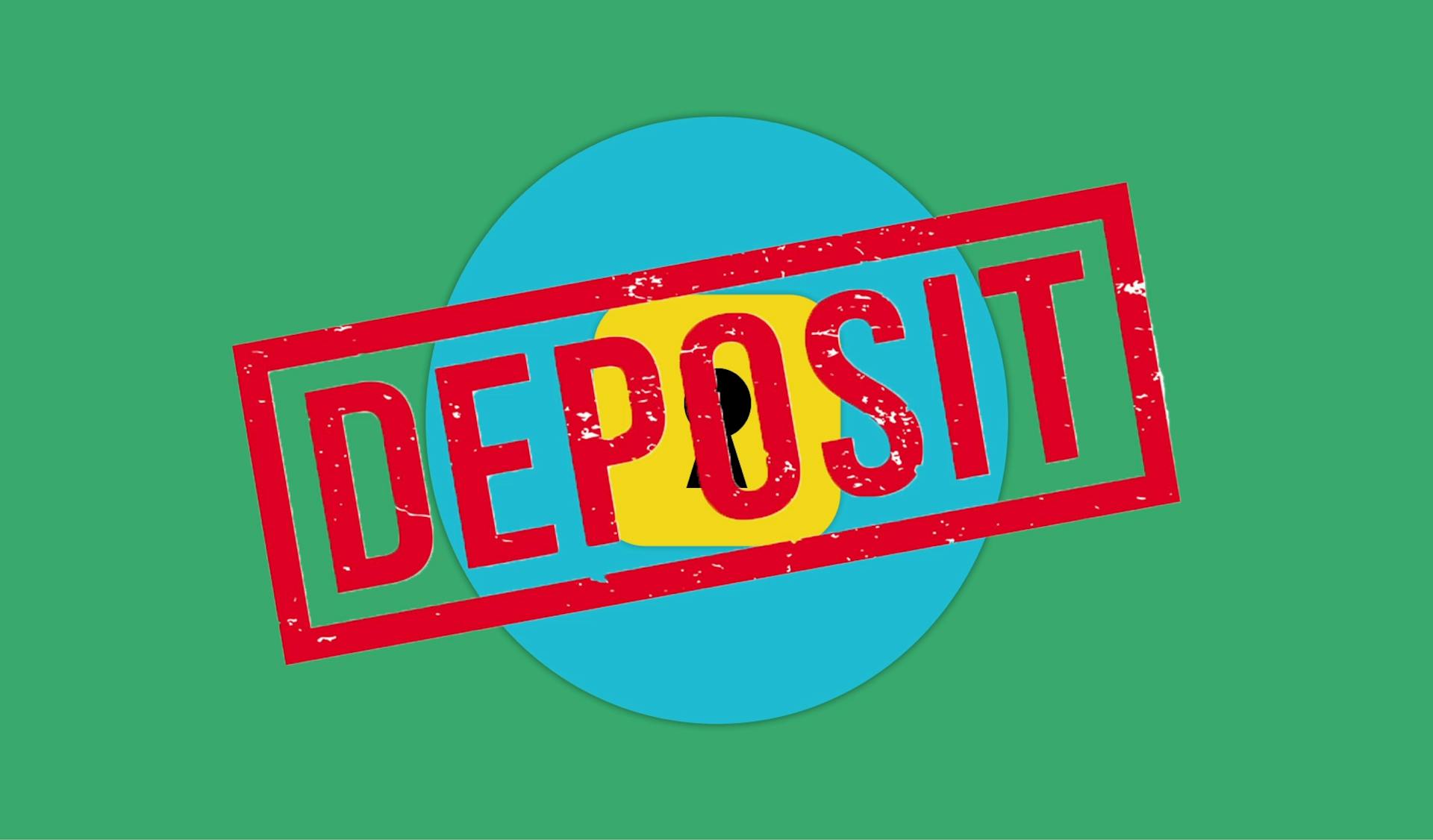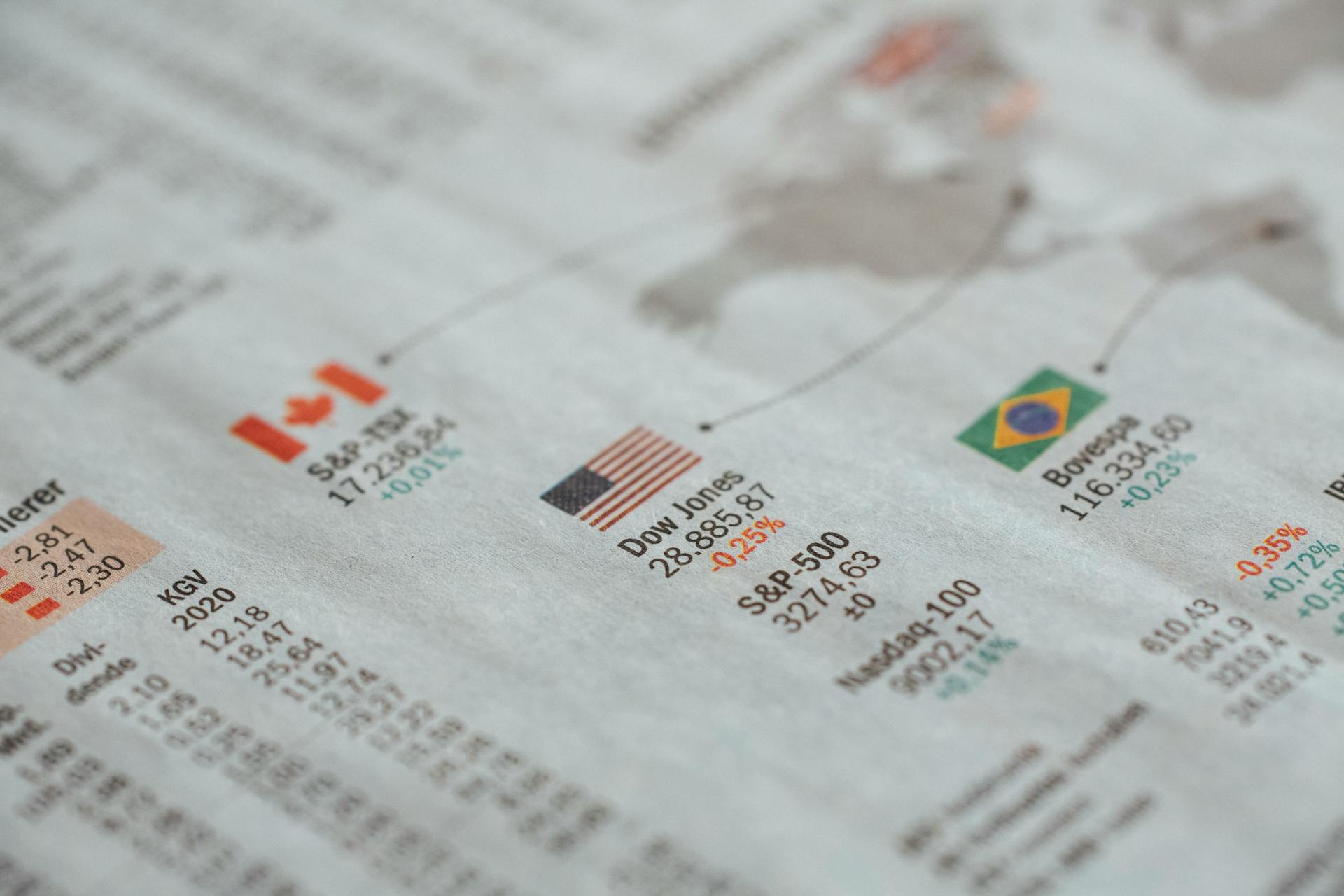
Convertible debt is a financing option that can be a game-changer for entrepreneurs. It allows you to raise capital without giving up equity, but with a twist - the debt can convert into equity at a later stage.
The key benefit of convertible debt is that it provides flexibility, allowing investors to convert their debt into equity when the company reaches a certain valuation milestone. This can be a huge advantage for startups that are still refining their business model.
In a convertible debt deal, the investor lends money to the company, and the loan is secured by a promise of repayment or conversion into equity. The conversion rate is typically tied to the company's next funding round or a specific valuation milestone.
The conversion rate can be a crucial factor in a convertible debt deal, as it determines how much equity the investor will receive in exchange for their debt. A lower conversion rate means the investor will receive more equity, while a higher rate means they will receive less.
Here's an interesting read: Convert Mp4
What Is Convertible Debt?
Convertible debt is a type of investment used by early-stage startups to raise funds without worrying about the exact valuation of the company just yet.
It's essentially a mash-up of debt financing and equity financing, where you borrow money from investors with the understanding that the convertible note will either be repaid or turned into a share in the company at some later point in time.
This conversion happens after an additional round of fundraising, for instance, or once the business reaches a certain valuation or share price.
The goal is for convertible note holders to invest capital into an early-stage startup company now without having to worry about what the exact valuation might be just yet.
The convertible note structure essentially "punts" the valuation until a later funding round, which is typically when venture capital funding steps in.
At its most basic, convertible debt is a loan - an investor gives your startup money to build the business.
Broaden your view: Convertible Equity Financing
Unlike bank loans and credit cards, you don't pay back the loan with more money.
Instead, when the time comes - during a later round of funding - you will convert the original amount of the loan into equity (stock) in your new company.
The unique feature of this type of funding is that it compensates the VC or angel for taking on risk by leveraging two essential components: a discount and a cap.
A convertible bond is a type of convertible debt that yields interest payments but can be converted into a predetermined number of common stock or equity shares.
The conversion from the bond to stock can be done at certain times during the bond's life and is usually at the discretion of the bondholder.
Convertible debt is a very popular way for early-stage startups to raise money versus a traditional equity funding round.
It's often used as a seed investment, providing funds to a startup before its first round of stock offering (the series A funding round).
Readers also liked: Consolidation Debt Loan
Understanding Convertible Notes
Convertible notes are a type of loan that startups can use to raise funds, with the understanding that the loan will convert to an equity investment when a specific trigger event happens, typically the next round of invested capital.
They're often used by angel investors who want to invest in a startup early on, as they can be faster to execute and cheaper in legal fees compared to traditional financing methods.
Convertible notes work by allowing investors to lend money to a startup, with the understanding that the loan will convert to equity at a later date. The interest that accrues on the loan is typically added to the investment amount at the time of conversion, rather than being repaid periodically.
One of the benefits of convertible notes is that they eliminate the need to debate valuations, which can be a time-consuming and contentious process for both investors and founders.
Here are some key characteristics of convertible notes:
- Convertible notes are a loan made to startups at the early stages that is intended to be short-term debt.
- They will convert into equity based on the next qualified financing round.
- Typically, the interest that accrues on the loan is added to the investment amount at the time of conversion.
Convertible notes have become the standard method of early-stage fundraising, as they're faster to execute and cheaper in legal fees compared to traditional financing methods.
Investors often say yes to convertible notes when they're the easiest way a deal can get done, eliminating the need to debate valuations.
Priced Round and Valuation
It's impossible to accurately value an early-stage company, with valuations ranging from $250k to $2.5 million, but not $20 billion.
A priced round is a funding round where the company sets a specific valuation, which can be a risk for both the startup and the investor.
In a priced round, the valuation is set at the time of investment, and it's up to the investor to decide if they're comfortable with the valuation.
The valuation cap, on the other hand, sets the maximum valuation the convertible debt loan can be converted at, which is designed to incentivize early investors.
For example, if an investor puts in $100k with a valuation cap at $2,000,000, but the company raises more money at $5,000,000, her $100k will convert at the $2,000,000 valuation.
Priced Round: Definition and Difference
A Priced Round is a type of equity funding where investors simply get a percentage of the company upon investment.
In a Priced Round, equity holders receive their percentage of the company without any additional considerations.
Unlike Convertible Notes, Priced Rounds don't involve short-term debt, interest rates, maturity dates, or valuation caps.
This is because Priced Rounds don't have a convertible note element at all, which means investors don't have to worry about the complexities of convertible notes.
Valuation Cap
A valuation cap is a crucial element in convertible debt that sets the maximum valuation the investor will pay upon conversion. It's designed to protect early investors from overpaying in the future.
Most early-stage companies are impossible to value accurately in their infancy, so a valuation cap helps to limit the risk for investors. This is especially important for seed investors who may not have a clear picture of the company's value.
A valuation cap sets the maximum valuation the convertible debt loan can be converted at. For example, if an investor puts in $100k with a valuation cap at $2,000,000, but the company raises more money at $5,000,000, her $100k will convert at the $2,000,000 valuation.
In a SAFE note, the valuation cap is the most important element for early-stage investors. It indicates the maximum valuation the investor will pay upon conversion, which is the same as any kind of Convertible Note structure.
The cap can also be used to calculate the stock purchase price. If the series A stock offering is valued at $20 million and the cap on the convertible debt is set at $10 million, the seed investor can purchase stock at $2.50 per share.
Discount
Convertible debt with a discount attached gives the early investor the option to convert their seed money into stock at a lower price than other investors.
Typical discounts range from one percent to 35 percent, with 20 percent being the most common.
If you offer series A stock at $5 per share, a seed investor holding a convertible debt with a 20-percent discount would convert their initial investment into stock for $4 per share.
The formula to calculate the discounted share price is: Discounted Share Price = Stock Price Per Share – (Stock Price Per Share X Discount Rate). For example, with a 20% discount, the discounted share price would be: $5 – ($5 X 0.20) = $5 – $1 = $4 per share.
A 20% discount rate means that if the company gets a $1,000,000 valuation in the future, the early investor's money converts at a $800,000 valuation.
When to Use Convertible Debt
Convertible debt is a versatile financing option that can be used in various situations. It makes the most sense for startups that are not yet ready to set a valuation for their company, as it provides a mechanism where the entrepreneur can give up less future equity.
For early-stage startups, convertible notes are often the default choice due to the uncertainty surrounding valuation. This type of debt tends to favor the startup company versus the note holders, allowing entrepreneurs to give up less equity in the future.
Convertible notes can also speed up the fundraising process, using fairly standard legal documents that bring both parties together quickly. This streamlined process is a result of the standardized terms in convertible note financing, which reduces the need for lengthy negotiations.
Curious to learn more? Check out: Will Debt Collectors Give up
When Makes Sense
Convertible debt makes sense for startups that are not yet ready to set a valuation for their company, either because it's too early to determine one or because they have reason to believe that the valuation will be much higher at a later date.
This is almost always the case for early-stage startups, which is why they default to convertible notes. Convertible Notes tend to favor the startup company versus the note holders because it provides a mechanism where the entrepreneur can give up less future equity, especially if the company winds up becoming wildly successful.
For a finance director watching the trend in interest rates, there is an attraction in trying to catch the lowest point in the cycle to fund with fixed rate debt, or swap variable rate bank borrowings for fixed rate convertible borrowing. This can be especially beneficial when the fixed market turns, as it may still be possible for a company to borrow via a convertible carrying a lower coupon than ever would have been possible with straight debt funding.
Locking into low fixed–rate long-term borrowing can be a smart move for companies, but it's essential to consider the terms and conditions of the convertible note.
When Valuations Disagree
Most early-stage companies are almost impossible to value by seed investors in their infancy.
Is your mobile app pre-money valuation $250k, $2.5 million or $20 billion? The answer is not $20 billion.
The goal is to let a later investor determine the value of the company, which can be more accurate since the startup has matured enough to do so.
A valuation cap can protect against this risk by limiting how high the future valuation can affect the existing convertible debt investment.
In some cases, startups may not raise more money, and the convertible note will simply turn into a traditional loan.
This optionality allows both parties to consider either outcome, giving startups a hedge between taking on equity versus some other debt investment.
Curious to learn more? Check out: What Should You Not Say to Debt Collectors
Uses for Investors
Convertible bonds can be a great option for investors, offering a higher yield than shares and providing asset protection. They're often less volatile than regular shares, making them a safer bet.
One of the key benefits of convertible bonds is that they offer a higher yield than shares. This can be attractive to investors looking for a higher return on their investment.
Convertible bonds also provide asset protection, as their value will only fall to the value of the bond floor. This means that investors can limit their potential losses.
In fact, the value of a convertible bond will only fall to the value of the bond floor, making them a safer option than preferred or common shares. This is because the bond floor acts as a safety net, preventing the bond's value from dropping too low.
Here are some key benefits of convertible bonds for investors:
- Higher yield than shares
- Less volatile than regular shares
- Asset protection through the bond floor
Overall, convertible bonds can be a smart choice for investors looking for a higher yield and lower volatility.
Challenges and Risks
Convertible debt may favor entrepreneurs, but it's not without its challenges. The whole convertible note structure can be tricky to navigate.
Convertible bonds issued by startup or small companies come with a higher risk of default or large price movements. This means investors need to be aware of significant credit risk and price swing behavior.
Investors may not like the terms of convertible debt, and some may even be turned off by them. This is especially true if they prefer to negotiate a valuation upfront, rather than risking a discount later on.
When to Not Raise More Money
Raising more money isn't always the best option for startups. In fact, there are scenarios where it's better to not raise more money.
Convertible debt deals are typically intended to convert to equity at a future date, but that conversion is often intended for a future financing round.
There's no guarantee that early-stage startups will raise more money, either because they can't or they don't need to. This is especially true for startups that are not yet ready to set a valuation for their company.
If a startup doesn't raise more money, the convertible note will simply turn into a traditional loan. This means they'll have to pay that amount back unless they can agree on a fair valuation to convert the note to equity.
Convertible notes can be used as a hedge between taking on equity versus some other debt investment, giving both parties a bit of optionality to consider either outcome.
Challenges
Convertible debt may seem like a straightforward way to secure funding, but it's not without its challenges.
The whole convertible note structure isn't without its challenges, favoring the entrepreneur less often than you might think.
One of the main challenges is that convertible debt can be complex and difficult to understand.
The entrepreneur may have to deal with the whole convertible note structure, which can be a lot to handle.
Warning to Investors
Investors should be aware that convertible bonds carry a higher risk of default or large price swings compared to well-established firms.
This is due to the fact that convertible bonds are mainly issued by startup or small companies, which have a higher chance of default.
Investors need to have a keen awareness of significant credit risk and price swing behavior associated with convertible bonds.
Valuation models must capture credit risk and handle potential price jumps to accurately assess the value of these bonds.
If a convertible bond is not converted by its maturity date, the issuing company is typically obligated to repay the principal amount of the bond to the bondholder.
The bondholder will also receive any accrued interest payments.
Investors may not like the terms of convertible debt, which can be a concern if you're working with investors who are hesitant to invest.
This can lead to turning off prospective investors who would otherwise consider investing.
Key Risks to Consider:
- Higher risk of default or large price swings
- Significant credit risk
- Potential price jumps
Key Takeaways
When dealing with convertible debt, it's essential to understand the potential challenges and risks involved. Here are some key takeaways to keep in mind:
Convertible debt can be a safer option for investors, as it provides asset protection and a lower volatility level compared to regular shares. This is because the value of the convertible bond will only fall to the value of the bond floor, making it a more stable investment.
Convertible bonds often offer a higher yield than regular shares, which can be attractive to investors. However, this higher yield comes with a trade-off: the bondholder may not be able to sell the bond short, which can limit their ability to profit from a decline in the stock price.
One of the key risks of convertible debt is the potential for the issuer to delay or refuse conversion, which can leave investors with a bond that is not convertible. This can be a major challenge for investors who are counting on the bond's conversion feature to realize a profit.
Here are some common risks associated with convertible debt:
Overall, convertible debt can be a complex and challenging investment option, but with the right understanding and caution, it can also be a valuable tool for investors.
Terminology and Key Terms
Convertible debt deals are driven by a handful of specific terms that govern the events that trigger the debt to convert and the value of the existing investor's capital when their debt converts to equity.
These terms include interest payments, conversion to stock, and specific times during the bond's life when the conversion can happen. The conversion from the bond to stock happens at the discretion of the bondholder, usually at specific times.
Here are the 5 Key Terms of Convertible Notes:
Terminology and Key Terms
Convertible debt deals are driven by a handful of specific terms that govern the events that trigger the debt to convert and the value of the existing investor's capital when their debt converts to equity.
Most convertible debt instruments have five key terms that you should be familiar with, including the conversion price, interest rate, maturity date, conversion ratio, and redemption price.
A convertible bond pays fixed-income interest payments, but can be converted into a predetermined number of common stock shares. This type of bond offers investors a type of hybrid security that has features of a bond, such as interest payments, while also having the option to own the underlying stock.
For your interest: Definition of Convertible Bonds
Mandatory convertibles force the holder to convert into shares at maturity, and often have two conversion prices that limit the price where the investor would receive the equivalent of its par value back in shares, and where the investor will earn more than par.
Contingent convertibles are automatically converted into equity if a pre-specified trigger event occurs, such as if the value of assets is below the value of its guaranteed debt.
Here are the 5 key terms of convertible notes:
- Conversion price: the price at which the bond can be converted into shares
- Interest rate: the rate at which interest payments are made
- Maturity date: the date on which the bond expires
- Conversion ratio: the number of shares that the bond can be converted into
- Redemption price: the price at which the bond can be redeemed
Foreign Currency
Foreign currency convertibles are any convertible bonds whose face value is issued in a currency different from the issuing company's domestic currency. This can create added complexity for investors who need to convert the foreign currency to their own domestic currency.
Issuing bonds in foreign currencies can be a strategic move for companies looking to tap into international markets and raise capital from a broader range of investors.
Creeping Tender Analysis

The Creeping Tender Analysis is a crucial concept to understand when approaching existing convertible investors. It determines whether a repurchase or exchange of securities constitutes a tender offer under the Exchange Act.
The Securities and Exchange Commission (SEC) doesn't have a bright-line definition of a tender offer, making it a "facts and circumstances" determination based on prior case law. This means that issuers must be mindful of the characteristics of a public tender offer to avoid triggering an SEC review.
The Wellman Test is a key tool used in this determination, consisting of eight factors surrounding the facts and circumstances of a specific repurchase. Two of the most important factors in the Wellman Test are the activity and scope of the solicitation.
Issuers generally advise limiting their offers to no more than approximately 10 holders and up to 80% of the aggregate principal amount of notes outstanding. This can help make the repurchase or exchange substantially dissimilar from a tender offer, reducing the risk of triggering an SEC review.

It's essential to note that this rule doesn't preclude the lead bank or issuer from selling new bonds to additional investors outside of the current note holders. However, issuers should speak with counsel ahead of time to determine the maximum number of investors to approach and repurchase from, as well as the maximum percentage of bonds to repurchase.
Here are the two most important factors in the Wellman Test:
- How active and widespread is the solicitation?
- How substantial is the solicitation in terms of percentage of existing securities?
Choice
Seed investors have the option of including a discount, a cap, or both in their convertible debt. This is where the desirability of convertible debt as an early-stage fundraising option really shines.
A discount in convertible debt allows the investor to buy shares at a lower price than the market price. Typically, investors prefer the option that nets them the most shares at the lowest price.
If the convertible debt contains both a discount and a cap, the investor can choose which option to exercise. The best choice depends on how the market values your company and where it sets the price per share of your series A offering.
The choice between a discount and a cap may not always be clear-cut, and it all depends on various variables.
Features and Varieties
Convertible debt offers a unique set of features and varieties that can benefit investors and issuers alike. A convertible bond includes a conversion option, allowing the bondholder to convert the bond into a specified number of shares of the issuing company's stock.
The conversion ratio determines the number of shares that a bondholder will receive upon conversion, and is usually expressed as the number of shares per bond. For example, a conversion ratio of 20:1 means that one bond can be converted into 20 shares of the company's stock.
Convertible bonds also offer regular interest payments, which may have a lower interest rate compared to non-convertible bonds due to the added value of the conversion option. The maturity date is fixed, with the principal amount of the bond due to be repaid by the issuer at this time.
Some convertible bonds come with call and put options, adding flexibility for both the issuer and the bondholder. A call option allows the issuer to force conversion or redeem the bond before maturity, often at a premium price, while a put option allows bondholders to sell the bond back to the issuer at a specified price before maturity.
On a similar theme: Do Debt Collectors Call You
There are also different varieties of convertible bonds, including vanilla convertible bonds, mandatory convertible bonds, and reversible convertible bonds. Vanilla convertible bonds are the most common type and offer the holder the right to convert into a certain number of shares determined by a conversion price.
Here are the key features of convertible bonds:
- Conversion Option: The ability to convert the bond into shares of the issuing company's stock.
- Interest Payments: Regular interest payments with a lower interest rate compared to non-convertible bonds.
- Maturity Date: A fixed date when the principal amount of the bond is due to be repaid by the issuer.
- Conversion Ratio: The number of shares that a bondholder will receive upon conversion.
- Conversion Price: The price at which the convertible bond can be converted into shares.
- Call and Put Options: Additional flexibility for both the issuer and the bondholder.
Discount Rate
A 20% discount rate is a common rate that gives convertible debt investors a "discount" to the future valuation, making their investment worth more.
This means that if a company gets a $1,000,000 valuation in the future, their money converts at a $800,000 valuation, which is a 20% "discount" on the original investment.
A 20% discount rate is a significant advantage for early investors, as it gives them a higher return on investment compared to later investors.
In most cases, the cap will offer the highest return on investment, making it a better option for investors.
Features
Convertible bonds offer a unique set of features that make them attractive to investors and issuers alike. They include a conversion option, allowing bondholders to convert the bond into shares of the issuing company's stock.

The conversion option is a key feature of convertible bonds, giving bondholders the flexibility to choose when to convert their bond into shares. This is determined by the conversion ratio, which is fixed at the time the bond is issued and expressed as the number of shares per bond.
Convertible bonds also pay regular interest to bondholders, known as coupon payments. These payments may have a lower interest rate compared to non-convertible bonds due to the added value of the conversion option. The interest payments continue until the bond matures or is converted into equity.
Some convertible bonds come with call and put options, adding even more flexibility for both the issuer and the bondholder. A call option allows the issuer to force conversion or redeem the bond before maturity, often at a premium price. A put option allows bondholders to sell the bond back to the issuer at a specified price before maturity.
Here are the key features of convertible bonds:
- Conversion Option: The ability to convert the bond into shares of the issuing company's stock.
- Interest Payments: Regular interest payments to bondholders, which may have a lower interest rate compared to non-convertible bonds.
- Maturity Date: A fixed date when the principal amount of the bond is due to be repaid by the issuer.
- Conversion Ratio: The number of shares that a bondholder will receive upon conversion, fixed at the time the bond is issued.
- Conversion Price: The price at which the convertible bond can be converted into shares, usually set at a premium to the current market price of the stock.
- Call and Put Options: Optional features that add flexibility for both the issuer and the bondholder.
Convertible bonds also offer issuers the benefit of lower fixed-rate borrowing costs, typically yielding 1% to 3% less than straight bonds. This makes them an attractive option for companies looking to fund their operations at a lower cost.
Synthetic

Synthetic bonds are a type of structured product that replicates a convertible payoff on a specific underlying equity.
They are often issued by investment banks and can be cash settled with no equities produced as a result of conversion.
Synthetic bonds are more similar to structured products than traditional convertibles.
In fact, most reverse convertibles are synthetics, which can sometimes be confused with Packaged Convertibles.
However, synthetics and Packaged Convertibles are two completely different products with different risks and payoffs.
The Barclays/MSFT 25 bond is an example of a synthetic bond issued by Barclays Bank PLC referencing Microsoft as the underlying equity.
What Is Delta Matching?
Delta matching is a technique used in audio engineering to improve the sound quality of a mix by adjusting the levels of individual tracks to create a balanced mix. It's a crucial step in the mixing process.
By matching the levels of different tracks, engineers can ensure that each instrument or vocal is heard clearly and without overpowering the others. This is especially important when working with multiple tracks.

Delta matching involves comparing the levels of two or more tracks to determine how much they need to be adjusted. This is often done using a meter or a graph.
The goal of delta matching is to create a balanced mix where each element has its own space in the soundstage. This requires a good understanding of the relationships between different frequencies and levels.
Cap and Discount
A cap and discount are two features that can be attached to convertible debt, giving investors more flexibility and control over their investment.
A discount rate, typically 20%, gives investors a "discount" to the future valuation, making their investment worth more. For example, if a company gets a $1,000,000 valuation in the future, a 20% discount means their investment converts at a $800,000 valuation.
Typical discounts range from one percent to 35 percent, with 20 percent being the most common. This means that if you offer series A stock at $5 per share, a seed investor holding a convertible debt with a 20-percent discount would convert their initial investment into stock for $4 per share.
A cap, on the other hand, sets the maximum valuation the convertible debt loan can be converted at. This can incentivize early investors, as seen in the example where an investor puts in $100k with a "valuation cap" at $2,000,000, but the company raises more money at $5,000,000, allowing their $100k to convert at the $2,000,000 valuation.
Here's a comparison of a cap and a discount:
A cap and discount can be combined, giving investors the option to choose which one to exercise. In most cases, the cap will offer the highest ROI, making it the better choice for investors.
Frequently Asked Questions
Who benefits from convertible debt?
Convertible debt benefits investors who want to potentially earn returns from both interest payments and capital gains if the company's stock price rises
What is an example of a convertible loan?
A convertible loan is a type of investment where a company receives capital with a predefined interest rate and a discount on its shares as a risk compensation. This arrangement allows investors to convert their loan into company shares at a later stage.
What happens when convertible debt is converted?
When convertible debt is converted, the loan amount is typically exchanged for a specific number of company shares, determined by dividing the loan amount (plus interest) by a set share price. This process involves calculating the exact number of shares to be issued to the noteholder.
What are the disadvantages of convertible debt?
Convertible debt can be a concern for startups due to investor uncertainty about equity terms and lack of control. This can lead to investors being wary of the deal until a milestone is reached.
Is convertible debt the same as a bank loan?
No, convertible debt is not the same as a bank loan, as repayment is typically made with equity rather than cash. This key difference sets it apart from conventional loans.
Featured Images: pexels.com


